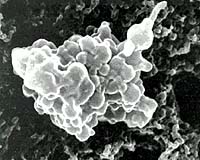 |
Beijing (UPI) Dec 6, 2010 China says it has perfected the difficult task of getting giant pandas to reproduce in captivity, a step closer to reintroducing the bears into the wild. Scientists at the Chengdu Panda Breeding Research Center have reached their target of successfully raising 300 of the bears in captivity, which should lead to the first captive-bred panda being reintroduced into the wild within 15 years, the BBC reported Sunday. There are probably no more than 3,000 pandas in the wild. Researchers have attempted to breed captive pandas since the first such cub was born at the center in 1963, but many obstacles stood in the way of achieving a stable captive panda population. Female pandas are only in heat for 72 hours a year, and can only actually become pregnant during a 12- to 24-hour window during this time. And despite researchers efforts to encourage mating, being in captivity seemingly "turned off" the bears. Scientists have had to rely upon artificial insemination, but even then found themselves up against the pandas' peculiar reproductive cycle, where pregnancies can last for from 11 weeks to 11 months, and can remain undetected until shortly before birth. The surge in panda numbers at the Chengdu center has been mainly due to an innovative "twin swapping" technique. More than half of pandas give birth to two cubs at a time but only care for one, since they cannot store fat and lack the milk or energy to care for more than one cub at a time. Whenever a cub was abandoned after birth, keepers at the Chengdu center would swiftly transfer it to an incubator then trick the mothers into caring for twins by stealthily rotating the twins between their mother and the incubators. The technique raised the survival rate of cubs to 98 percent, center official said. Researches say they believe captive numbers are strong enough to consider wild reintroduction programs.
earlier related report Indonesian researchers conducting a questionnaire-based survey across the island to identify the status of Sumatran tiger distribution found that tigers still occupy a large majority of the remaining available habitat in Sumatra, a release by scientific publisher Wiley-Blackwell said Monday. Researchers Hariyo T. Wibisono and Wulan Pusparini found that of the 55,660 square miles of remaining potential habitat, tigers are present in more than 97 percent of it. "These findings imply that Sumatran tiger population might be much larger than we believed, and could potentially be the second-largest tiger population in the world after India," Wibisono said. However, they say, only 29 percent of the habitat found to contain tigers is protected. Tigers occupy a great diversity of ecosystems, the survey found, from sea level in coastal lowland forests to 10,500 feet above sea level in high mountain forests and in every eco-region in between. "There is a need for further scientific population assessment," Wibisono said, "but if the population is indeed as large as this new survey suggests then real actions and more support from tiger experts and the international community should be mobilized in the conservation of Sumatran tigers."
Share This Article With Planet Earth
Related Links Darwin Today At TerraDaily.com
 UMass Microbiologists Evolve Microorganisms To Cooperate In New Way
UMass Microbiologists Evolve Microorganisms To Cooperate In New WayAmherst MA (SPX) Dec 03, 2010 University of Massachusetts Amherst microbiologists Derek Lovley, Zarath Summers and colleagues report in Science that they have discovered a new cooperative behavior in anaerobic bacteria, known as interspecies electron transfer, that could have important implications for the global carbon cycle and bioenergy. The scientists found that microorganisms of different species, in this case two ... read more |
|
| The content herein, unless otherwise known to be public domain, are Copyright 1995-2010 - SpaceDaily. AFP and UPI Wire Stories are copyright Agence France-Presse and United Press International. ESA Portal Reports are copyright European Space Agency. All NASA sourced material is public domain. Additional copyrights may apply in whole or part to other bona fide parties. Advertising does not imply endorsement,agreement or approval of any opinions, statements or information provided by SpaceDaily on any Web page published or hosted by SpaceDaily. Privacy Statement |